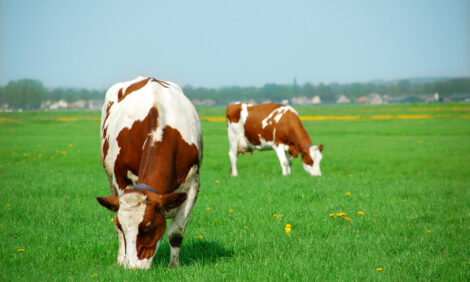



Ensuring the Most Exposed Animals the Best Welfare
DENMARK - Scientists are working on developing practical and effective tools that focus on improving welfare for those animals whose risk of poor welfare is greatest.They are working on developing effective tools for finding livestock farms that are not up to par with regard to good animal welfare. The research project also aims at teaching the farmers in question how to improve the welfare of their animals on a lasting basis.
Compared with many other countries, animal welfare is a highly prioritised area in Denmark. Animal production takes place in increasingly larger units resulting in less time for monitoring and care of each individual animal. If care and monitoring fail on a single farm, then a large number of animals are at risk of experiencing unacceptably poor welfare.
In a new project supported by the Ministry of Food, Agriculture and Fisheries, scientists from the Faculty of Agricultural Sciences, Aarhus University, and from KU Life and DTU are involved in developing practical tools that simply and effectively can help the farmer identify problems at herd level and help the farmer improve the situation.
The aim is for the effort on animal welfare to be more targeted and efficient. Research should enable farmers and authorities to put actual words and figures on what is acceptable or unacceptable in animal welfare.
"Animal welfare at the herd level is a complex concept and it is difficult to determine whether the level of animal welfare is acceptable or not," says the leader of the project, head of research unit Jan Tind Sørensen from the Department of Animal Health and Bioscience.
Supporting those at most risk
The problem is that although animal welfare in Denmark generally is good, there are still bad apples among the livestock farmers. Poor welfare conditions affect not only the animals. When cases of poor conditions are revealed, it damages the reputation of farming as a whole – even if the number of bad apples is very small.
There is therefore every reason for the bad spots to be weeded out. Increased control of all livestock farms would be an expensive and inefficient way of tackling the problem. There is no need to control good farms repeatedly.
"On the basis of research with fattening pigs, sows and dairy cows, we will formulate minimum requirements for the treatment of farm animals. We will also produce an effective tool to identify herds that do not live up to requirements," says Jan Tind Sørensen, the project co-ordinator.
Mortality, culling, medicine consumption, lameness, the incidence of lesions and findings at the slaughterhouse are some of the data that scientists will incorporate in their work.
Lasting improvements
Orders will in all likelihood not solve the problem. It is important that the farmer takes on the responsibility. Therefore, the project aims at teaching farmers with animal welfare problems in order to achieve extensive, lasting improvements.
"We aim to find how to achieve the best animal welfare with the least possible financial investment. As things stand now, the authorities only visit five percent of all livestock farms. If the authorities had a method by which to find farms at risk, then they could concentrate their efforts on them," says Mr Sørensen.
The research project Animal welfare in livestock herds is financed by the Ministry of Food, Agriculture and Fisheries and runs from 2009 to 2012.
TheCattleSite News Desk


